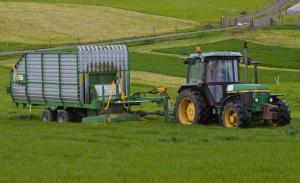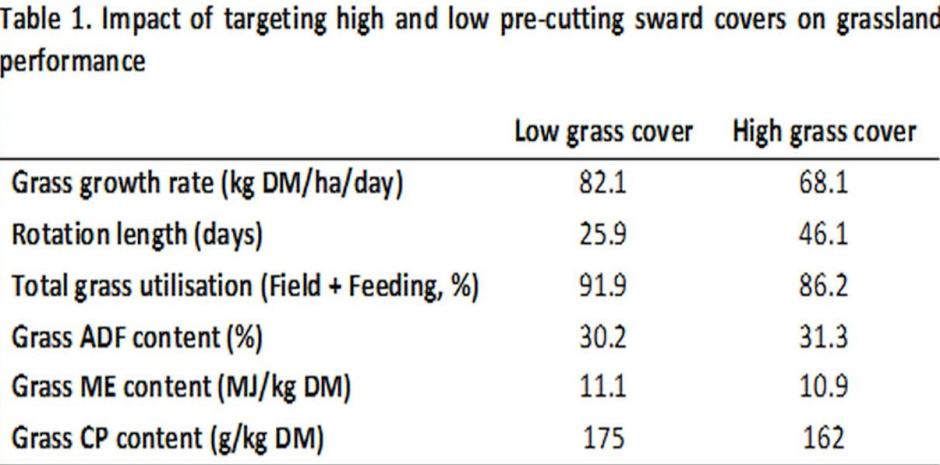Zero-grazing: Know when to mow
Date published:
With the unfavourable weather at the start of spring hopefully behind us, it’s now time to look at grassland management and focus on strategies to maximise both grass yield and utilisation this season.

For some farmers zero-grazing provides an opportunity to increase grass utilisation when compared with conventional grazing systems. However, to achieve improvements in utilisation careful attention must be paid to grassland management, with recent results from AFBI indicating that maintaining pre-cutting sward covers below 3500 kg DM/ha is key to improving both grass utilisation and animal performance. AFBI Dairy Scientist Gillian Scoley discusses the recently conducted research on zero-grazing at different sward covers.
Fresh grass is the cheapest feed source available to dairy cows and increasing its inclusion in dairy cow diets presents farmers with opportunities to reduce feed costs. To achieve this some farmers are turning to zero-grazing to make use of fragmented or far away land, lower feed costs of housed cows or simply improve grassland utilisation. Indeed, recent AFBI research has indicated an increase of 15% in grass utilisation in zero-grazing systems compared to conventional grazing systems. This improvement often comes from the ability to achieve consistent residuals of 1600 – 1800kg DM/ha, alongside reduced rejection sites in swards associated with excreta or urine spots in conventional grazing systems.
Zero-grazing also provides the opportunity to cut at higher grass covers (>3500 kg DM/ha) which would otherwise be challenging in a grazing system. But what impact does using these covers have on animal performance and grass utilisation?
During summer 2017 AFBI compared animal and sward performance in two groups of housed cows offered fresh grass harvested from low cover swards (3500 kg DM/ha) or high cover grass swards (4500 kg DM/ha). Cows were housed full time and offered fresh grass twice daily with additional concentrate feeding in parlour at a rate of 6.4 and 4.7 kg DM/day for cows and heifers respectively. Grass utilisation, grass intake and animal performance were measured over a 110 day period.
Results showed that feeding grass from the high cover swards had a negative impact on grass production, with an average reduction of 14 kg DM/ha/day in grass growth rate when compared with the low cover swards (Table 1). Grass utilisation and quality were also reduced in the high cover swards, with an increase in acid digestible fibre (ADF) and reduction in metabolisable energy (ME) content observed (Table 1). This impacted on grass intake with animals on the low grass cover treatment consuming 0.9kg DM/cow/day more than the high grass cover treatment.

Cow performance was also impacted by pre-cutting sward cover with daily milk yield increased by 1.8 kg/cow/day when cows were offered grass from low grass cover swards compared with those on the high cover treatment (Figure 1). An uplift of 0.2 kg/cow/day in milk fat plus protein yield was also evident on the low cover treatment.
Both improvements in milk yield and quality contributed to higher profitability from the low grass cover treatment. Using a base milk price of 28 pence per litre, margin over feed and forage cost for cows fed low grass cover swards was £4.78/cow/day compared with the high grass cover treatment (£4.21/cow/day; concentrate cost = £213/t DM and zero-grazing grass cost = £90/t DM).
